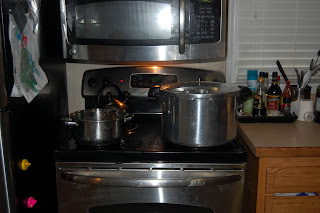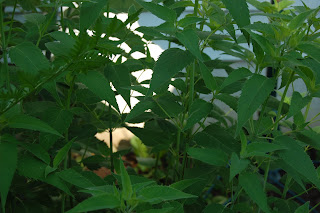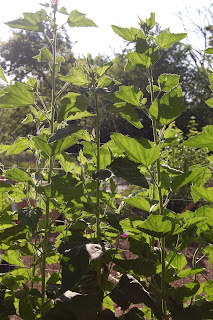If you've been following along with this blog you will know that our family is a huge fan of tea time. We are also herb gardeners and enthusiasts. So, I figured, now that our herbs are in full swing due to the warm weather I would post about a few of them and their uses.
Bergamot (Monarda didyma)
Not to be confused with the Bergamot orange plant this wonderful herb is a favorite in our garden. It's name is derived from the fact that it smells and tastes very similar to the Bergamot orange which serves as the flavoring for Earl Grey tea. It is also known as Bee Balm or Oswego Tea. It's very easy to grow and is really an enjoyable tea plant to have in the garden.
Hyssop (Hyssopus officinalis)
Hyssop is known as the "holy herb" and has been much loved for it's cleansing properties since ancient times. It is mentioned several times in the bible, but most famously in a passage from Psalms, "Purge me with hyssop, and I shall be clean". It makes an agreeable tasting green tea and is sometimes used often in conjunction with the next herb I'm going to talk about.
Horehound (Marrubium vulgare)
Most people are familiar with good old fashioned horehound candy and this is the plant it is derived from. It has a high mucilage content which makes it a great soothing drink. As mentioned above it is sometimes used with hyssop. However, before you go brew yourself a cup of straight horehound tea, please be advised that it is a very bitter herb! You will need to add some kind of sweeter and maybe even temper the flavor with other herbs. Mint is always a good choice for this.
Lemon Balm (Melissa officinalis)
Such a wonderful summer time tea plant. The lemon balm plant is great in both hot tea and iced tea. As the name implies it has a lemony flavor that's very refreshing. We make it mixed with a few other cooling herbs as an iced tea for our family summer solstice celebration. It can also be used in place of lemon in recipes. Just make sure you taste it frequently so you know how much you're putting in. I've also heard of it being used in sorbet, but have not tried it yet. So, if anyone does try it, let me know what you think!
Catnip (Nepeta cataria)
Cats love it and you will too! This herb makes a beautiful light green tea with a mild flavor. We often mix it with some mint at our house for soothing before bed drink. Easy to grow and very prolific. Once it's in the garden though it's not easy to get rid of.
Spearmint (Mentha spicata)
First, let me issue you a warning if you try to grow mints! They spread like wildfire and are nearly impossible to kill. They will be around partying with all of the processed sweet treats, that we hear don't ever decay, and the cockroaches after the end of the world! That said, they are an amazing tea plant and one that everyone should have in their tea garden. You just want to make sure it is contained in an area where you don't want anything else to grow or better yet grow it in a pot. And if tea isn't you're thing then you can always make the leaves into mojitos or mint juleps!
Marshmallow (Althaea officinalis)
The leaves, roots and flowers of the Marshmallow plant can all be use for making a fabulously mild and soothing tea. The Marshmallow plant has a high mucilage content which makes it a great choice for a tea that is calming to the mouth, throat and stomach.
This is only a small taste of what we have in our gardens that can be made into tea. There are so many more herbs that make amazing tea plants that you wouldn't even think of. Sage tea, for one, is a favorite at our house. Lavender is another one that, while usually thought of only in perfumery, can make an amazing tea or even a flavored sugar for hot tea.
I will very soon have these very plants up for sale at our Poppy Swap store. They are all naturally grown with no pesticides, so if you're in the market for some dried herbs please think of us! And if you're here local and are interested in fresh herbs send me an email and I'll let you know what's in season!


























